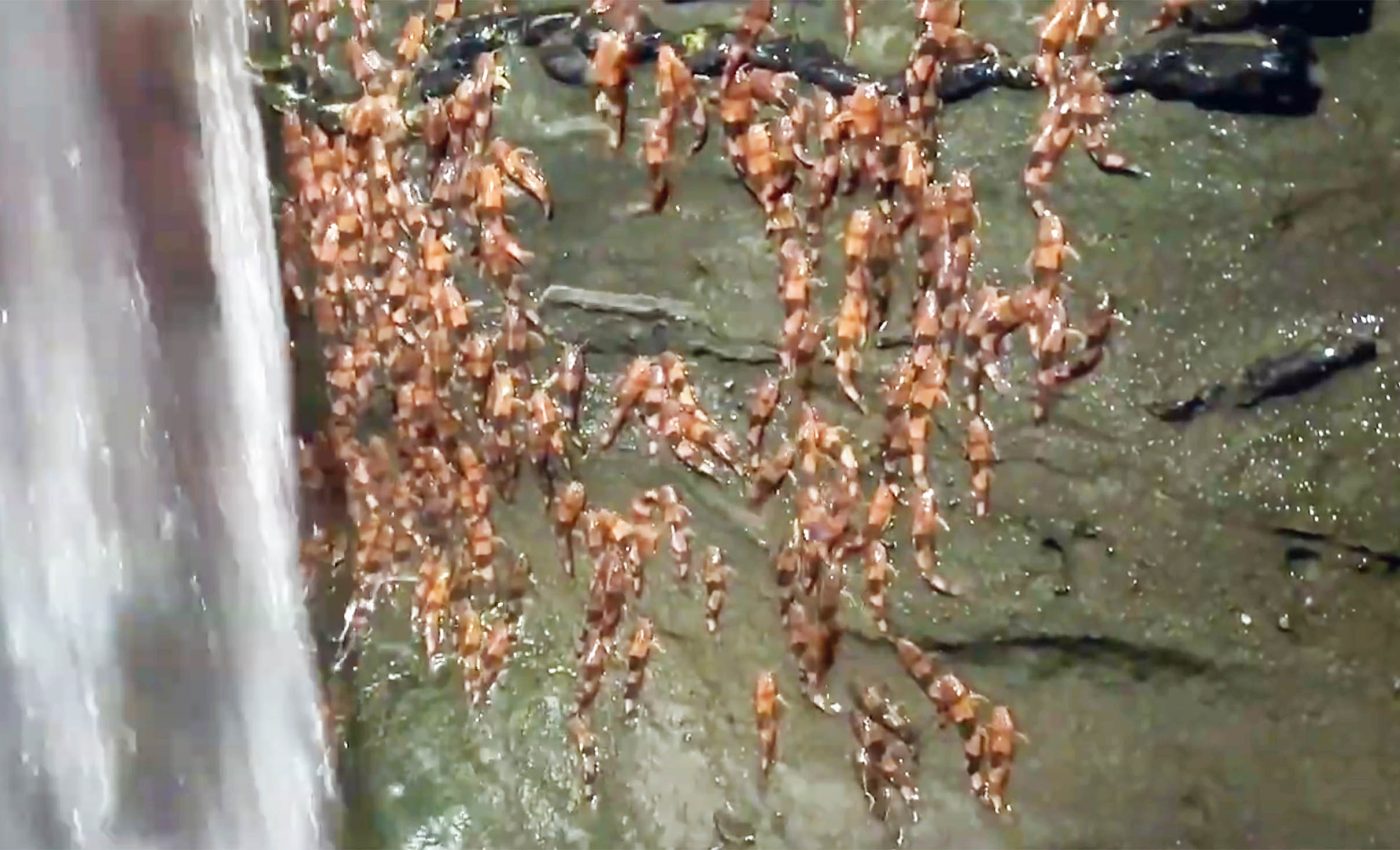
Scientists capture video of rare fish species 'climbing' Brazilian waterfalls
In November 2024 in southern Brazil, thousands of bumblebee catfish, Rhyacoglanis paranensis, were filmed climbing waterfalls, according to a peer reviewed study.
The event took place at the Sossego waterfall on the Aquidauana River in the Paraguay River basin of Mato Grosso do Sul.
Environmental Military Police first spotted the ascent on slick rock faces between about 3 and 13 feet high. A Brazilian research team arrived a week later and documented the twilight climb in detail.
Rhyacoglanis paranensis on tape
The field effort was led by Manoela M. F. Marinho of the Federal University of Mato Grosso do Sul (UFMS). Her team focused on dense nighttime aggregations forming along the margins of the falls.
Observers described fish stacked above one another on more level rock where thin sheets of water flowed. On steeper faces, individuals advanced in short bursts, pausing briefly before the next push.
Three other species ascended in the same corridor, which signaled a shared route rather than a one off detour. Adults dominated the movement, and both males and females were present.
The group recorded positions around boulders and edges that minimized direct flow on the body. Those small breaks created momentary holds that were enough to keep progress steady.
How Rhyacoglanis paranensis climbs
The team noted paired fins spread wide as each Rhyacoglanis paranensis fish hugged the rock surface. Side to side body movements and tail thrusts nudged them forward against the current.
A shallow cavity under the belly formed as the fins pressed down, which likely created suction that helped the fish adhere to flat surfaces. The motion pattern used short stops to reattach before the next shove.
Suction based climbing is well documented in several waterfall gobies that use mouth or pelvic structures to grip stone, as shown by open access research.
Those species evolved cling and climb strategies in fast flows, and these catfish observations point to a different body plan achieving a similar result.
Researchers reported individuals crossing the undersides of rock crevices and even man made objects at the site. That behavior implies strong control of adhesion at small contact areas in thin, fast sheets of water.
Timing matters at the falls
Afternoon heat kept activity low, so fish held in shade and under cover. As the sun dipped, climbing began, and by early night the route turned into a moving ribbon of bodies.
The rainy season had just started, which matches migration windows for many Neotropical fishes that cue on rising flows. Short, seasonal pulses reconnect habitat patches that are separated at low water.
The pattern at the falls points to reproduction as a driver because mature adults dominated and movement headed upstream. Field crews recorded the surge soon after the first strong rains of the season.
Events like this tend to last hours or a few nights, so they are easy to miss without eyes on the river. Direct documentation becomes essential for species that are rarely seen in rapid water.
Rhyacoglanis paranensis conservation
Small migratory fishes move nutrients and energy between habitats in ways that stabilize food webs. If their routes are narrowed or blocked, those transfers shrink and local ecosystems lose resilience.
Dams and barriers isolate populations and block passage for fish, as shown by a global review.
Fragmentation also makes short range migrations riskier because fish are squeezed into fewer, harsher bottlenecks.
“These findings highlight the importance of field observations in understanding small migratory fishes’ ecological role and conservation needs, particularly in the context of potential threats posed by habitat fragmentation and river damming,” said Marinho.
The statement underscores why site level evidence should inform river management choices.
For the Paraguay system, river infrastructure decisions will shape whether brief movement windows like this remain open. Good evidence helps managers align operations with periods when fish must pass.
Neotropical migrations
Many freshwater species in tropical South America move seasonally rather than constantly. Rising flows open side channels, floodplain creeks, and rocky margins that are dry or isolated at low water.
In the Paraná Paraguay drainage, conservation planners have struggled to align protected areas with places that matter for fish life cycles, according to a basin-wide analysis.
Safeguards often miss stretches that hold distinct lineages or critical functions.
The climb of Rhyacoglanis paranensis shows how small, uncommon fishes can need brief access to specific ledges and seams. Those micro routes are easy to overlook when plans are drawn only at broad scales.
Because many species split their lives among habitats, protecting a few fixed boxes on a map will not cut it. Success depends on timing, flow patterns, and the tiny choke points that field cameras can finally reveal.
Studying Rhyacoglanis paranensis
The team captured behavior at the site, not the full biomechanics behind adhesion. High speed video, pressure sensors, and precise anatomical work could test whether the belly cavity truly generates negative pressure.
The genus sits in the catfish family Pseudopimelodidae and is rarely sampled in fast water. New descriptions are still being added, as a recent taxonomic update shows.
Better monitoring will require time synced cameras and water loggers at likely crossing points. Reports from enforcement units and local communities can help researchers reach sites quickly when flows rise.
Open data on these pulses will also improve risk screening for barriers and operations. Good documentation supports smarter choices about siting, timing, and mitigation in working rivers.
The study is published in the Journal of Fish Biology.
—–
Like what you read? Subscribe to our newsletter for engaging articles, exclusive content, and the latest updates.
Check us out on EarthSnap, a free app brought to you by Eric Ralls and Earth.com.
—–













